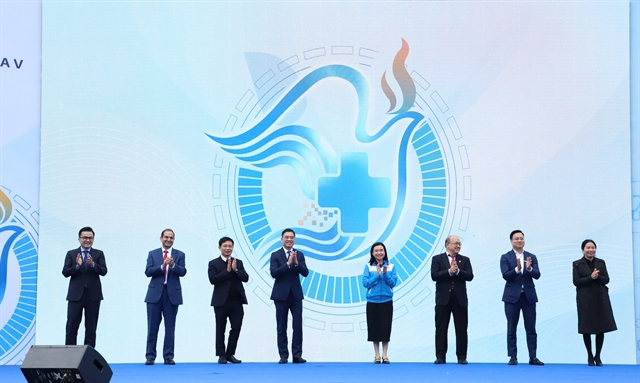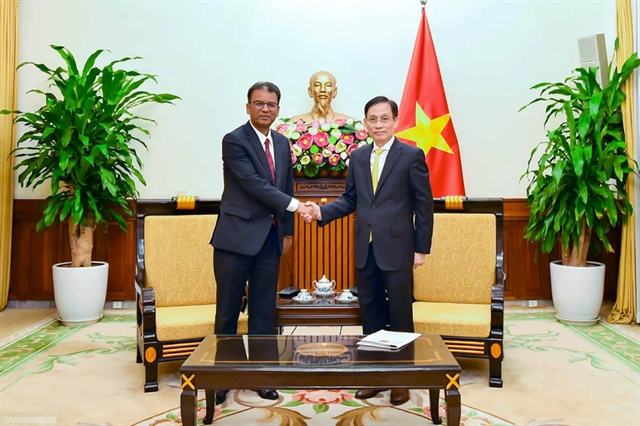 Society
Society

 |
| Conference on the project titled “Rice straw-based circular economy for improved biodiversity and sustainability” on Thurday in Hà Nội. VNS Photo Tố Như |
HÀ NỘI – A project titled “Rice straw-based circular economy for improved biodiversity and sustainability” (RiceEco) will be implemented by the International Rice Research Institute (IRRI), together with partner countries Việt Nam and Cambodia for a period of three years from 2023 to 2026.
The Ministry of Agriculture and Rural Development (MARD) and the IRRI co-organised the RiceEco project kick-off conference on Thursday.
The conference introduced the rice straw-based circular economy project and solutions for sustainable and low-emission straw management, and consultation on green development based on straw.
The project which is funded by the Mekong-Republic of Korea Co-operation Fund (MKCF) will build and develop a circular economy model from straw, including farming practices and technologies for sustainable rice, organic rice, and straw-based products such as straw mushrooms, cow fodder, bio-fertilisers, bio-plastics and urban agriculture.
In addition, the project will also develop management of straw collection and transportation with the support of mechanisation and digital agriculture.
This rice straw-based circular economy project will make an important contribution to support the project “Sustainable development of one million hectares specialising in high-quality rice cultivation associated with green growth in the Mekong Delta” of Việt Nam.
At the conference, Dr. Nguyễn Văn Hùng, IRRI senior scientist and project leader, emphasised that this project, with the participation of many public-private sector partners, has many strengths in policy, science, and scaling up application, such as IRRI, development and management partners Việt Nam and Cambodia, and private enterprises, and hopes to accelerate the development of the value chain "circular, only main products, no by-products", increase income from straw, and increase the value of products that meet international standards such as sustainable and low-emission rice production.
According to Nguyễn Như Cường, director of the MARD’s Department Crop Production, Việt Nam’s rice growing area is about 7.22 million hectares, down about 588,000 hectares compared to 2015 while rice yield is over 6 tonnes per ha, increasing by 300kg per ha per year, and rice exports increased by an average of 130,000 tonnes per year.
A circular economy from straw is an important criterion in the target strategy of the project "Sustainable development of 1 million hectares of high-quality rice associated with green growth in the Mekong Delta", Cường said.
Moving rice straw out of fields helps reduce greenhouse gas emissions, creates a source of organic fertilizers and reduces use of chemical fertilisers as well as meets the standards of sustainable, green, clean, organic brand products, thereby increasing income for farmers, Cường said. VNS




